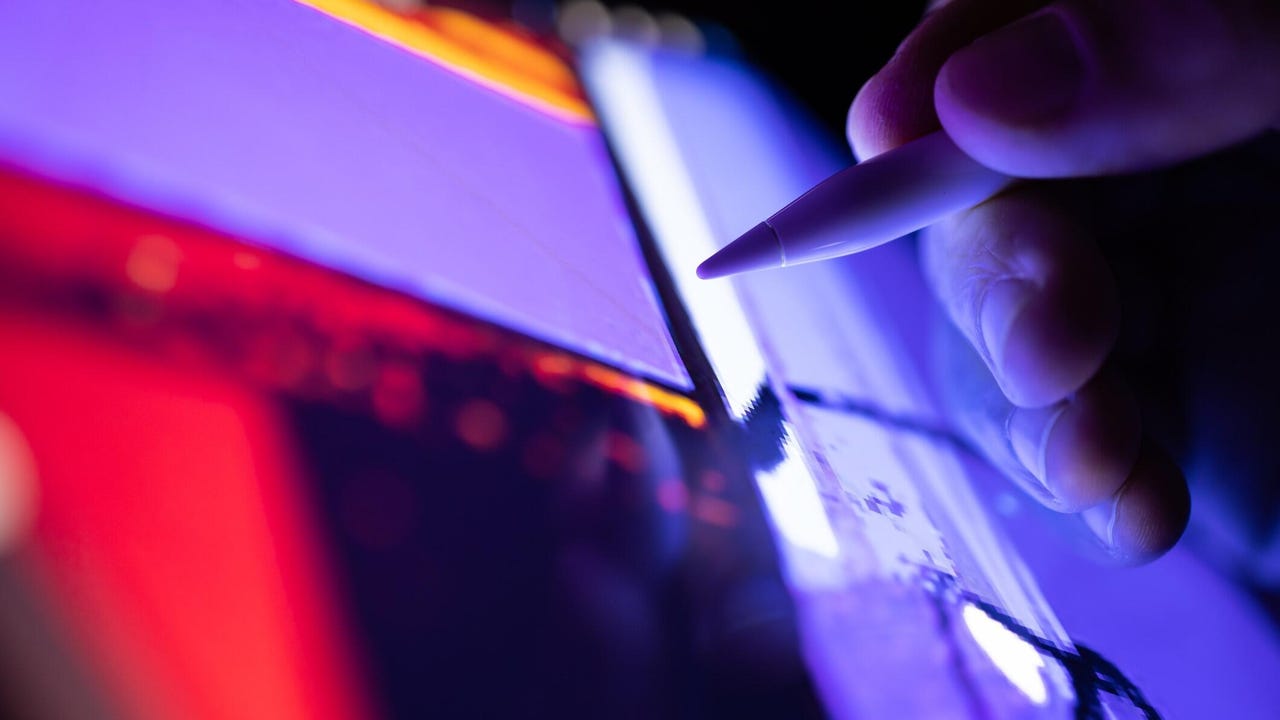































 Getty Images
Getty Images The past few years have seen great options emerge for every type of note and style of note-taking. Word processors and sketching apps have bled into tools specializing in note organization (OneNote, Evernote, Joplin), tracking backlink relationships (Obsidian, Roam Research), aggregating research sources from the web and other documents (LiquidText, Flexcil), mind-mapping (LucidChart, MindMeister), whiteboarding (Miro, Mural), and others.
Amidst the blurred boundaries of these categories, freeform note-taking tools meld the spontaneity and flexibility of the pen and paper with digital capabilities that include selecting and moving sections of text, converting handwriting to text, and cross-device syncing. While the field has included several specialized devices (reMarkable) and paper-digital hybrids (Livescribe, Rocketbook), mainstream tablet platforms that relegated keyboards to an accessory have proved fertile ground for freeform note capture.
But pen input has faced a winding path across platforms. Apple brought pen input across the iPad line and gave handwriting-to-text a huge boost in iPadOS 14 with its Scribble feature, but doesn't support pen input on the iPhone. On Android and Chrome OS tablets, most business-focused products from Lenovo, Samsung, and HP support pen input; several of these brands support the Google-backed Universal Stylus Initiative that appears slated for support on Google's tablet market comeback play, the Pixel Tablet. On the Android phone side, Samsung's Galaxy S22 Ultra has replaced the pioneering Galaxy Note while TCL recently joined Motorola as a vendor of more affordable stylus-savvy phones, filling the hole left by the end of LG's Stylo line.
Then there's Windows, to which Microsoft added pen support years before smartphones appeared (much to the chagrin of a startup offering a Windows competitor called PenPoint). It brought pen support to the Surface Pro before Apple debuted the Apple Pencil, but the rare use of Windows 2-in-1s as tablets--combined with Windows' long-running dearth of touch apps--has resulted in poor support from third-party free-form note-taking tools beyond Microsoft's own OneNote. While OneNote is available on many platforms, other first-party apps are confined to a particular ecosystem (Apple Notes) or even brand (Samsung Notes). That's also true of several third-party products, For example, GoodNotes and Notability are iPad exclusives while Squid and Inkredible are exclusive to Android. Still, if you're looking for a freeform note-taking tool that gets you quickly into capture mode and works across platforms, there are several choices.
Noteshelf recently arrived on Android after a start on iPad. Both versions support multiple notebooks and browsing pages via thumbnails or bookmarks, importing audio and photos, highlighting, handwriting-to-text conversion, automatic shape recognition, and a range of selection options that include bringing to front/send to back, resizing, and color selection. . However, the younger Android version lacks a "zoom box" feature to facilitate detailed work and a presentation mode.
Choosing the best tablet can be tricky. Yes, the top picks include the Apple iPad and iPad Pro, but we also love the Samsung Galaxy Tab S8 Ultra, Microsoft Surface Go 3, and others.
Read nowMyScript, the company behind theNebo app, has a note-taking legacy that extends back to Apple's Newton. It still licenses its AI-based handwriting recognition to companies such as Lenovo, Huawei, and Dell, which recently featured it in the Concept Stanza meeting-centric slate floated at CES 2021. Thus, it's no surprise that Nebo focuses on the handwriting recognition experience, previewing recognized text in real-time as you write. It can also recognize and convert math formulas and diagrams although we'd like to see at least PowerPoint-level editing capabilities for the latter.
With a price of$10 or more for its full feature set, Nebo is one of the more expensive note-taking tools, but the price includes free use of the MyScript cloud service to enable syncing notes using Dropbox and Google Drive. And while you must pay to use it on each platform, it's one of the few that fully supports Windows. It also offers a free viewer app for iOS and its iPad app can be used on Macs that support Apple silicon.
More: 3 very simple ways to take notes on your iPad using an Apple Pencil
Earlier, I mentioned Microsoft's OneNote, another note-taking app with deep roots. (It turns 20 next year.) OneNote's OneDrive supports syncing across iPhone, iPad, Android, the web, and of course Windows, where it features tight integration with the Surface Pen. OneNote's hierarchical system of notebooks, sections, and mixed-media notes is a bit to take in if you're used to tools like Evernote, but it can accommodate a wide range of organizational styles. OneNote makes it easy to get into a freeform capture mode and has a useful group of drawing tools. However, its handwriting-to-text feature works only on Windows.
Today, many note-taking apps adopt a page-centric construct that's breaking down as we move away from printing notes. Taking a cue from whiteboard apps, an alternative is the "infinite canvas" as implemented in the more sketch-centric (and broadly cross-platform) Concepts app. Also, as with many longstanding tools, note capture faces increasing competition from AI. The strong performance of transcribing tools such as Otter alleviates the need to capture what is said at the moment. More conferencing tools now create transcriptions on the fly while platform vendors are extending the reach of their live captioning features to a wider array of audio and video throughout the computing experience.
For now, these are more aids rather than a substitute for note-taking as only humans can create notes that interject their priorities and knowledge of information relationships beyond the scope of a particular piece of content. But if AI can create credible images of characters and scenes based just on textual descriptions, it's poised to master the mental process named after a popular children's drawing experience: connecting the dots.
 Tags chauds:
technologie
Notre processus
informatique
tablettes
Tags chauds:
technologie
Notre processus
informatique
tablettes